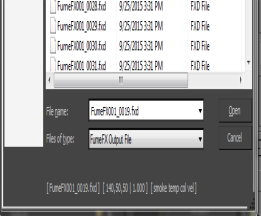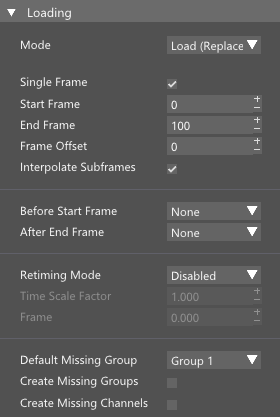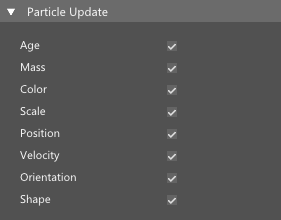load particle cache

This node will load saved cache.
[Inputs]
#Custom TM - Connect any custom transformation matrix to change the position of loaded particles.
Enabled - Enable or disable node evaluation.
Path - Select the location and file name where caches will be loaded from. Supported extensions are .nxd and .prt.
 - Allows you to select caches to be loaded.
- Allows you to select caches to be loaded.
Left click to open the file browser window.
Right click on the folder icon to open the following menu.

Open Folder in Windows Explorer - This option will open the cache path inside the Windows Explorer.
Copy File Path to Clipboard - Will copy the complete cache path to the Windows clipboard.
Below those two options there is a list of most recently used caches.
At the bottom of the menu there is a list of all the caches found inside the current cache folder.
 - Clicking on this icon will delete all the related caches in the folder.
- Clicking on this icon will delete all the related caches in the folder.
Loading

Mode - Determines a method for cache particles integration with the scene.
- Load (Replace) - This mode will erase all particles from the scene and then load particles from the cache.
- Import (Track) - Only new particles from the caches will be added to the scene while other particles from the cache will be tracked.
Single Frame - Enable this option if you want grid to be loaded only for current frame. For example - if your 3ds max time slider is on frame 50 and node parameter is changed, it will trigger simulation recalculation for the whole simulation range up to the frame 50. Enabling this option will load cache only when simulation reaches the current time slider frame (frame 50 in this example).
Start Frame - Cache loading will start at this frame.
End Frame - Cache loading will stop after this frame.
Frame Offset - This parameters defines cache loading offset frame.
Interpolate Subframes - Unchecking this option will disable interpolation between frames for sub-frame evaluations.
Before Start Frame - Choose what happens when the system tries to load cache before the Time Start.
After End Frame - Choose what happens when the system tries to load cache after the Time End.
Retiming Mode - Allows caches to play at different speed.
- Time Scale Factor - Use this option to change playback speed at constant rate.
- Frame - Animate this parameter to directly specify which frame to load at different 3ds max time.
Default Missing Group - particle will be loaded into a group it is saved to which is determined by the group name. If the group does not exist, the particle will be moved to the group as defined by this option.
Create Missing Group - By enabling this option the system will create any group that is present in the cache but not in the Workspace.
Create Missing Channels - By enabling this option the system will create any particle custom channel that is present in the cache but not in the Workspace.
Particle Update

This rollout is visible only when Mode is set to Import (Track). For each frame imported particle attributes can be updated based on the values from the source cache.
If you wish to affect imported particles velocity/position by using FumeFX nodes, then you will need to uncheck the Position option as this will always reset particle position to the one acquired from the source particle system. Enable attributes you wish to track from cache to particles.
Note: Since this node is part of the simulation flow it will save particles and their attributes that are calculated before this node is executed. Nodes that are executed after this node will not affect cached particle attributes for the cached frame. To cache all particles at the end of the simulation step place this node after all other nodes inside the node editor.
[Outputs]
Particle Stream - Outputs a stream of particles.
Particle# - This pin will output total number of particles that will be sent to the Particle Stream.
Total# - Total number of particles sent to the output.
Splines - If .nxd cache contains splines they will be loaded into the system. You can connect Arnold Curves node to this output to procedurally render splines.